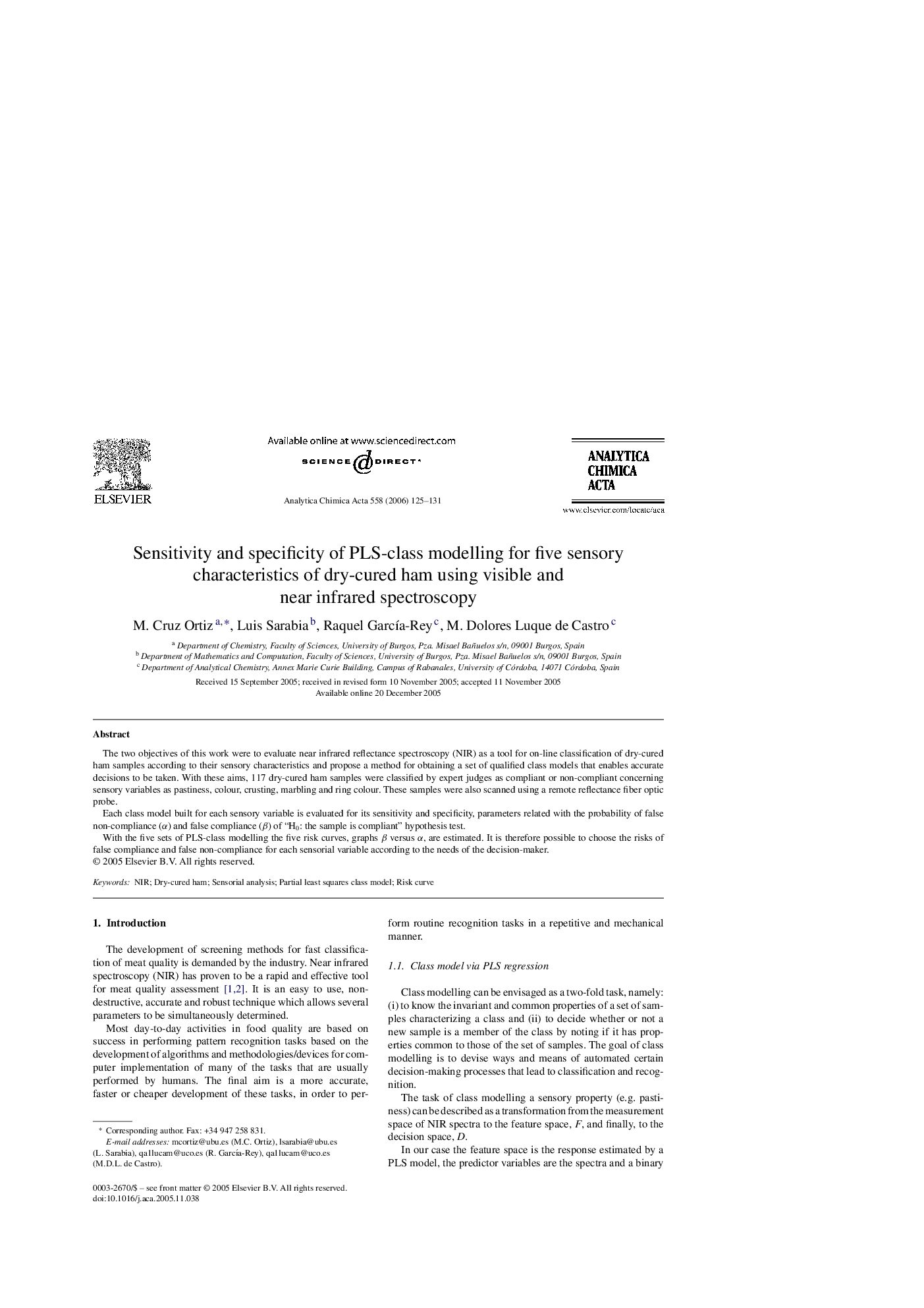| Article ID | Journal | Published Year | Pages | File Type |
|---|---|---|---|---|
| 1172529 | Analytica Chimica Acta | 2006 | 7 Pages |
The two objectives of this work were to evaluate near infrared reflectance spectroscopy (NIR) as a tool for on-line classification of dry-cured ham samples according to their sensory characteristics and propose a method for obtaining a set of qualified class models that enables accurate decisions to be taken. With these aims, 117 dry-cured ham samples were classified by expert judges as compliant or non-compliant concerning sensory variables as pastiness, colour, crusting, marbling and ring colour. These samples were also scanned using a remote reflectance fiber optic probe.Each class model built for each sensory variable is evaluated for its sensitivity and specificity, parameters related with the probability of false non-compliance (α) and false compliance (β) of “H0: the sample is compliant” hypothesis test.With the five sets of PLS-class modelling the five risk curves, graphs β versus α, are estimated. It is therefore possible to choose the risks of false compliance and false non-compliance for each sensorial variable according to the needs of the decision-maker.
